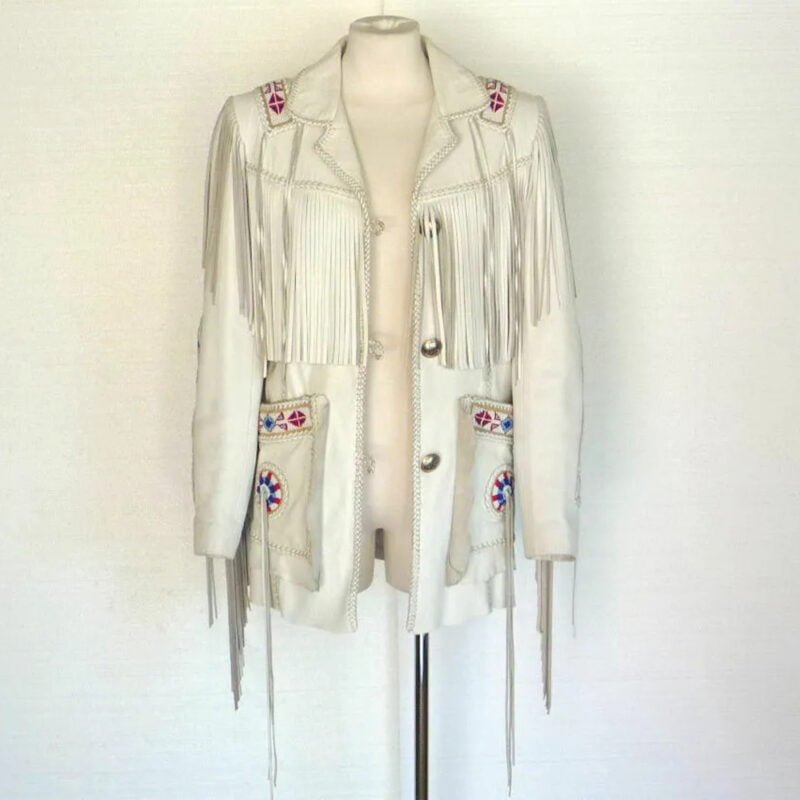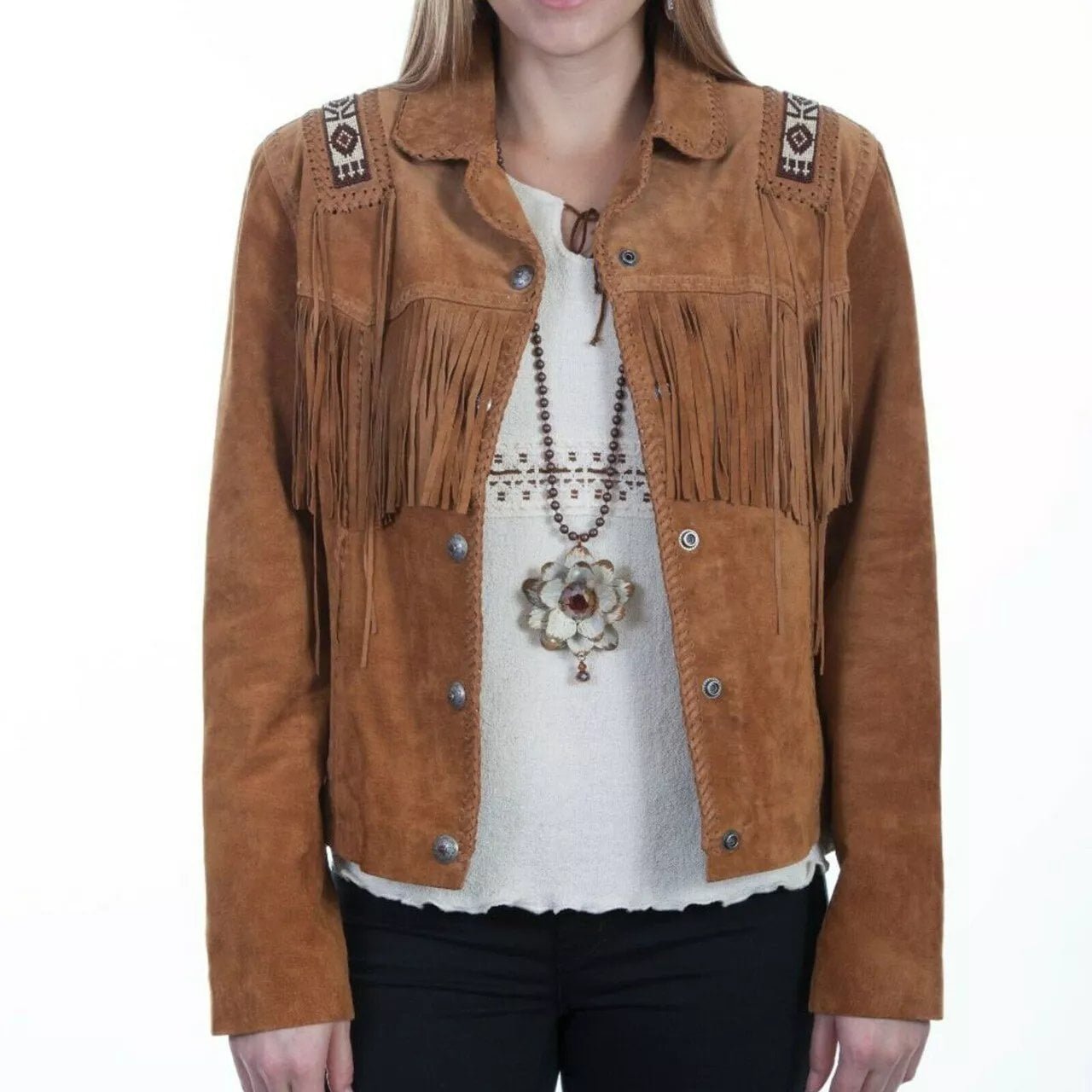how native american jacket girl wear?
Introduction to Native American Jacket Traditions
Native American jackets hold a profound significance that extends far beyond their utilitarian function as clothing items. These garments are deeply woven into the cultural, historical, and spiritual fabric of various tribes. For many Native peoples, jackets serve as a canvas to express identity, heritage, and ancestral stories.
The selection of materials used in crafting these jackets is often dictated by the natural resources available in the region inhabited by a tribe. For instance, the Plains tribes commonly utilized buffalo hide, while coastal tribes might employ animal furs like seal skins. These materials are not just chosen for their durability; they also carry symbolic meanings tied to the tribes’ relationship with nature and the animals that share their environment.
The crafting techniques employed by Native American artisans are highly specialized and vary significantly among different tribes. Techniques such as quillwork, beadwork, and embroidery are labor-intensive processes that require meticulous attention to detail. Quillwork, for example, involves the dyeing and stitching of porcupine quills onto leather or fabric, an art form particularly prevalent among the Plains tribes. Beadwork, on the other hand, has evolved over centuries and often features intricate patterns that narrate significant cultural tales.
While the form and function of these jackets have evolved over the years—adapting to contemporary fashion sensibilities—they remain steadfast in preserving their traditional essence. Modern iterations of Native American jackets often incorporate new materials and methods but still pay homage to their cultural origins. Today, these jackets continue to be a powerful symbol of Native American identity, serving as a bridge between past traditions and present-day expressions of heritage.
The Cultural Significance of Patterns and Symbols
Animals hold particular importance in Native American symbolism. For instance, the eagle represents strength and courage, the bear signifies healing and introspection, and the wolf embodies loyalty and guardianship. These symbols are not chosen arbitrarily; they reflect personal attributes, tribal affiliations, and the wearer’s connection to nature. Spirals and circular patterns often signify eternity or the cyclical nature of life, offering a visual reminder of the interconnectedness of all things.
The craftsmanship involved in creating these designs is nothing short of remarkable. Beadwork, embroidery, and weaving are the primary methods used, each requiring significant skill and precision. Beadwork, for example, often involves stitching thousands of tiny beads onto a fabric to create intricate patterns that can convey various symbolic meanings. Embroidery and weaving techniques are equally elaborate, often passed down through generations as treasured cultural knowledge.
In contemporary fashion, these traditional patterns and symbols continue to evolve while preserving their cultural essence. Modern interpretations might feature updated color schemes or innovative materials, but they still honor the original meanings and craftsmanship. This blend of tradition and modernity allows younger generations, like the Native American jacket girl, to express their heritage in a way that resonates with today’s fashion sensibilities while staying true to their roots.
Through these designs, each jacket becomes a narrative, intricately woven with the threads of tradition and contemporary expression.
How Native American Jacket Girl Incorporates This Tradition into Her Everyday Life
Wearing a traditional Native American jacket goes beyond mere fashion; it is a statement of identity and cultural pride.
Emma often pairs her richly embroidered jacket with contemporary items like jeans and casual tops, blending heritage elements with modern styles. By doing so, she sets a new trend among her peers, showcasing the timeless beauty of her culture. This fusion of traditional and modern fashion not only celebrates her roots but also makes the heritage piece accessible and relevant in today’s fast-paced world.
Adorning the jacket to school, Emma inspires curiosity and admiration from her classmates. She becomes a cultural ambassador, explaining the significance of the designs and symbols intricately woven into the jacket. These patterns, handed down through generations, represent stories and traditions that are integral to her community. By sharing these narratives, she fosters cultural appreciation and understanding among her peers, broadening their perspectives.
However, wearing such a distinctive cultural symbol also comes with challenges. Emma encounters occasional prejudice and stereotyping, but she views these moments as opportunities for education and dialogue.
At social events and public gatherings, Emma’s traditional jacket becomes a beacon of her cultural pride. It initiates conversations and connections, allowing her to share her heritage with a wider audience.
Preservation and Modern Adaptations of Native American Jackets
The preservation of Native American jacket-making is a testament to the resilience and vitality of indigenous cultures. Efforts to safeguard this traditional craft are gaining momentum, spearheaded by devoted artisans, designers, and community leaders.
Interviews with key figures in the community reveal a deep-seated passion for preserving these jackets. Rita Blackbear, a renowned jacket designer, emphasizes the importance of teaching younger generations. “We conduct workshops where we guide young artisans through every step of the jacket-making process,” she shares.
Efforts to preserve traditional jacket-making techniques are paralleled by modern adaptations that resonate with contemporary fashion trends. Influential fashion designers have recognized the unique aesthetics of Native American jackets, integrating them into mainstream fashion while maintaining respect for their origins.
Artisans like Alex Firewalker have taken innovative steps to blend tradition with modernity. “Our goal is to create pieces that honor our heritage but appeal to today’s fashion-forward audience,” he explains.
The impact of these efforts is palpable. Young Native American jacket-makers are emerging, armed with both ancestral knowledge and modern design sensibilities.



